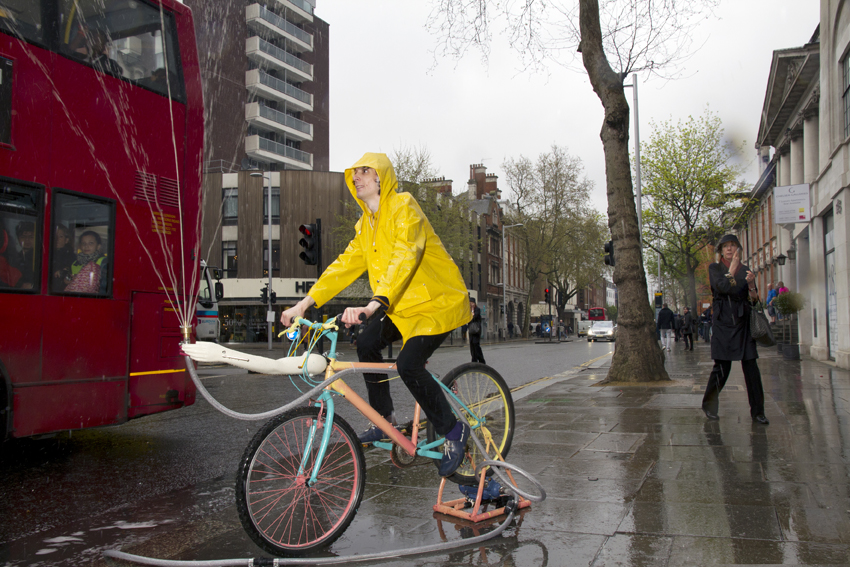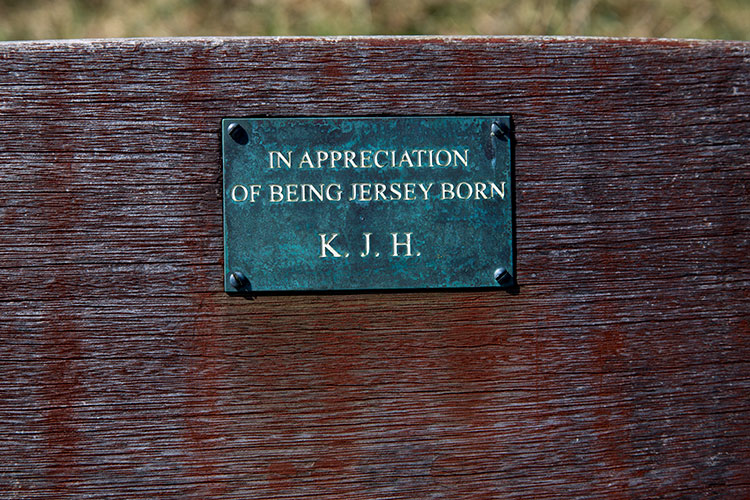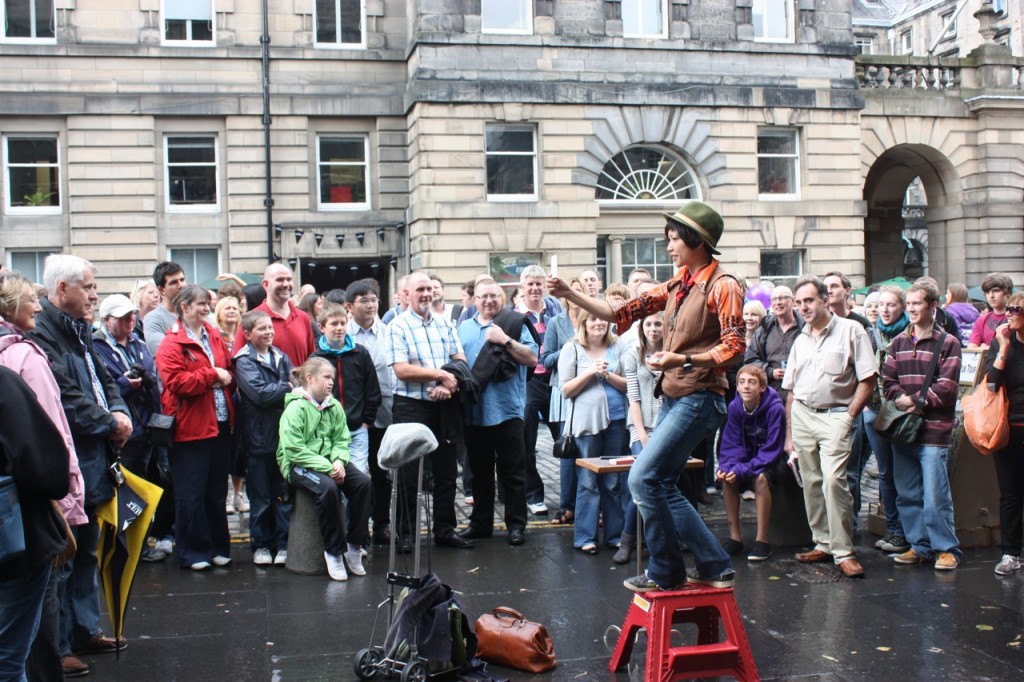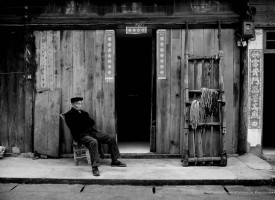Monthly Archives: June 2015
Filters
Ideas for My Trip to St Malo
Next Wednesday we are going on a school trip to St Malo as part of our work related to subversion. During our time in St Malo we are required to work in small group and come up with a series of different performances that would be considered as subversive, thinking specifically about how the audience would react to different performances considered strange and peculiar . I have brainstormed and selected a few of my best ideas.
1 – Writing with chalk
After reading George Orwell’s dystopia novel 1984 for my English A-Level coursework, I was drawn to the writing of a diary extract made by the main character, Wiston Smith in which he wrote ‘DOWN WITH BIG BROTHER’ – an act of rebellion against the novel’s oppressive regime. In the context of the novel the act of writing such a phase was an extremely serious crime that goes against the framework of the society. This has inspired me to write in chalk the same phrase on the streets of St Malo. This will be a subversive act, that symbolize a challenge towards society because of the context that the slogan played in the novel. The slogan, because it only has a reference to a fictional work therefore in reality has no direct meaning in real life. Instead it will be related more towards the contextual themes of the novel, which include general criticisms of society, through the use of extreme examples. My performance will therefore be a general, non-specific criticism of major issues within society, along the lines of government and the role of community.

2 – Capturing people’s reactions
Another idea which I have come up with is to photograph the reaction of the public whenever a subversive act is taking place either by a member of my group of even when we assemble as a collective group. I think that it would be an interesting idea to see how subversion has an effect on the people who are subjected to it. Through this I will be photographing from a candid/observational perspective without trying to influencing my subjects. This style of photography is known as documentary photography because I am attempting to give a realistic, accurate portrayal of events that are happening. It will be interesting to see from an outsider perspective the influence that subversion plays in society, without necessarily being part of the act nor perceiving it as the role of an audience. There is a definite element of chance within this type of photography. There is absolutely no way of knowing how the performance will turn out, and the outcome will depend entirely on the audiences response. My main intention of this is to document form an objective manner how people in society react to something considered ab-normal. It will therefore serve as an interesting research tool concerning the role of subversion in provoking responses within society.

3 – Tennis Ball Games
My final idea is a bit more general. It involves me photographing a performance of people taking part in a game-related activity with a tennis ball. I have not planned anything in particular, and will act spontaneously to evoke a game situations, perhaps at an informal moment, such as a break-time. The overall basis of this performance is to see how people react in casual and informal settings, and test whether they will behave more subversively in the context of an informal environment, and the extent of there awareness of this. Photographing this will be very interesting because the photograph can then be used objectively to test out a theory. The main objective therefore of the photo in the case is to illustrate how subversion works in real-life. I will include text at the bottom of the photograph in order to show the viewer specifically the purpose of this photo. In this instance it is important to highlight the meaning, as otherwise there is no clear meaning behind the photograph, and therefore there would be no indication of any thought/conceptual ideas being expressed.

Tom Pope
Tom Pope is a British performance photographer born in Bristol, he studied photography in arts at Swansea Metropolitan University, 2008 then he went on to study photography at The Royal College of Arts in 2011. Tom Pope’s work involves photographing an act, he uses videos because he thinks that one still image can’t capture the whole performance. Some of his videos are humorous where as others have a deeper meaning to them, Tom likes the idea of repetition and incorporating the public into his work as it makes it more interesting. Although some of his work looks spontaneous he puts a lot of work into them behind the scenes such as getting permissions. However, Tom also likes to push the boundaries of society by doing things which aren’t seen as acceptable in society. Some of the awards that Tom has won include: 2013, Public Arts Grant, Royal Borough of Kensington and Chelsea. 2011
Deutsche Bank Award Winner of the £10,000 Bursary Prix Leica Photography Prize and in 2010 Photograph of the month, National Portrait Gallery London.
Performance Photography
Performance photography is a radical and unusual way to photograph. It is more of an art form and in some ways comes across as a political movement to try and challenge authority and the way we as a society think. Performance photography can tell a simple story in the way it is presented but a lot of the time these performances have deeper meaning. This style of photography is usually done outside where it can be viewed by the public. It is an act whereby the spectator will be whoever happens to be present when the performer decides to perform.
To me performance photography isn’t just doing something to entertain a large audience. It is doing something in the public eye but without drawing attention to yourself by calling people over but by just doing your performance and seeing how much of a gathering you manage to create and how interested people are in what you are trying to do. I think that we often need to find ways to challenge the way that society thinks and we need to push the boundaries of what is acceptable in our community too.
St Malo Day: Brainstorming Ideas
Emile Guiton
Whilst we were at the Societe Jersiaise, each group was given a photographer to research from the archive, then we had to choose one of his photographs to illustrate performance photography which links in with our course work theme change, challenge and chance. The photographer my group got given was Emile Guiton.
Emile Guiton is a Jersey photographer, who was born in 1879. Emile chronicled photographs of life on the Island during the 20th century. There is now a collection of 781 photographs taken by Emile at La Societe Jersiaise. He photographed big events such as the German Occupation and the Liberation of Jersey as well as his personal life.
This photograph is about a “presentation by the vice president Colonel Collas DSO, at the Jersey Museum, of a photographic portrait to Emile F Guiton on his retirement as editor of the Bulletin and other Société publications” therefore the photograph shows a performance which is the act of them both shaking hands as well as giving a presentation. I think this photograph also links in with chance because there was no guarantee that this moment was going to happen or that it would be captured. I think challenge is also portrayed in this photograph because the photo challenges the idea of a typical portrait and it has a portrait within the portrait. Finally, it shows a change in Emile’s life as he Is now retiring as the editor of Societe publications and moving on to a new chapter in his life.
Société Jersiaise
On Tuesday the 9th of June we went to the Societe Jersiaise, to learn about the archive which can be seen as a visual history of Jersey. We then met the photographer in residence which was Tom Pope, who is a performance photographer. In Tom’s work he likes to push boundaries by doing something that is seen as socially unacceptable however isn’t against the law he does this in public spaces and wants to get audience’s participation.
One of the first activities we did with Tom Pope was, we got into pairs and throw an orange at each other with the aim of taking a photograph of the orange as close as possible to the camera. The main idea behind this activity wasn’t to necessarily get a good photograph of the orange but to show the performance/ act and push the boundaries of social acceptance. The second activity we did with Tom Pope was a ‘selfie war’ where in pairs you had to take as many selfies on your pairs camera while trying to stop your pair from doing the same thing but on your camera.
At the begging I struggled to understand why Tom was incorporating performance into photography, and how his short clips were seen as photography. By the end of his presentation I think I got a better understanding of why he was doing this as he explained the concepts behind each of his ideas.
Chance, Change and Challenge
For this particular part of the coursework we are looking at the three words ‘chance, change and challenge’. To me this is exactly what performance photography embodies. In order to make a great photograph/film you need to take a chance and try to anticipate what your audience are going to think. You also need to change your perspective of photography and not do what is expected, something that isn’t conventional to photography. You don’t need to concentrate too much on the composition of the photograph just as long as your subject is in frame. Finally performance photography is a challenge as it challenges the way I think and how I plan a photo shoot. This style of photography is all down to chance and how you as an individual photographer can create something great just on the spot in the environment you are surrounded by. I am excited to see how this project turns out as it does challenge the way I think about photography. Your work can either be really great or something that only the spectators who were there are able to see.
Tom Pope 2015 Photographer in Residence
Tom Pope is a British photographer born in 1986. He lives and works in London. Pope is the 2015 Photographer in Residence at the Jersey Photo Archives. Last Tuesday we worked with Pope alongside the Jersey Archisle where we did a few workshops to develop our understanding of Performance Photography. Pope is a performance photographer who usually goes on impulse and finds objects when he goes to where he is going to perform.
Pope’s performances are all recorded where he will find an image within each film. Often Pope’s spectators are those who happen to be on the scene at the time as he doesn’t pre-plan or tell anyone where he is going to be in a place.
So It Goes Project:
http://www.tompope.co.uk/soitgoes.html
So It Goes project interview:
The So It Goes project is filled with many different concepts that Pope has managed to create and are displayed on his blog which is linked above. The story of the Grandfather clock has a deeper meaning of living a life without time, which explains destroying the clock and carrying it around in a hearse. I like the idea of this project as in many ways people of our generation would be lost without time. They wouldn’t be able to do the usual things that we are expected to do, such as getting to work and school on time. What if time didn’t exist? What if we didn’t have to live in a world were time was the most important aspect and that we wouldn’t have to worry constantly about not having enough of it.
Another great project of Pope’s is the Fountain Bike. Here Pope made a bike with a mannequin hand holding up a hose pipe which was filtered from the rain water at the side of a road in the UK. Here Pope simply cycled on the spot in the rain and whoever was walking past was his audience and spectators.
 I like the vibrant colour of his yellow rain coat and the bright colours on the bike which make it stand out, as well as the obvious that water is shooting off the front of the bike through a hose pipe which is being held up by a mannequin hand and the water being produced from the rain water on the side of a road. This film still show many spectators of Pope’s performance. The first is the woman walking past on the street, moving to the side to avoid getting more wet from the water coming off the bike. The other spectators are the children on the bus who are looks at Pope in an entertained/confused way. I like that Pope will just go out and create something completely random to make an impact and to perform for the people who happen to be there at that time.
I like the vibrant colour of his yellow rain coat and the bright colours on the bike which make it stand out, as well as the obvious that water is shooting off the front of the bike through a hose pipe which is being held up by a mannequin hand and the water being produced from the rain water on the side of a road. This film still show many spectators of Pope’s performance. The first is the woman walking past on the street, moving to the side to avoid getting more wet from the water coming off the bike. The other spectators are the children on the bus who are looks at Pope in an entertained/confused way. I like that Pope will just go out and create something completely random to make an impact and to perform for the people who happen to be there at that time.
On Wednesday 17th the photography group are going to St Malo for the day along with Tom Pope and the Archisle people to show our skills in the art of performance photography. I am excited to see how this turns out and if we manage to come up with visually interesting pieces.
Yury Toroptsov 2014 Photographer in Residence
Yury Toroptsov was the photographer in residence at the Jersey Photo Archives in 2014. He was born in 1974 in Vladivostok, in Russia. Toroptsov is a photographer who focuses on the common denominator for distant cultures. He looks at people and their identity and the permanence of myths. Memories, metamorphosis, profane and sacred are the recurring themes in his photographs. He currently lives and works in Paris.
During Toroptsov’s six month period in working in Jersey, he found some old videos from the Second World War of the Battle of Flowers which still went on even throughout the duration of the war.
http://www.toroptsov.com/en/projects/fairyland.htm
Toroptsov was influenced by a particular float called ‘Fairyland’ which is developed in the first video on his website of the Fairyland page. This interests me as he looks deeper into Jersey and uses the Archive as a way to access the present day. This backs up what the Archisle man stated that ‘you need to understand a history to anticipate the future’. We as a community need to reflect and understand the past to move forward.
One photo in particular which I like is the one of a bench with a plague on it that says ‘In Appreciation Of Being Jersey Born – K.J.H.’. The reason I really like this image is because of the simple message that we should be proud to be Jersey born. Often people tell me that they wish they weren’t from here or that they don’t consider themselves as from here but instead from the background of where their parents are from. I am proud and happy to have been born and live in such a beautiful island. Although the island has many setbacks and is very cushioned compared to the rest of the world, I think that it has so much to offer. In the beauty of its landscapes and all the different cultures we have on the island. I like this image because it is simple yet powerful.






















